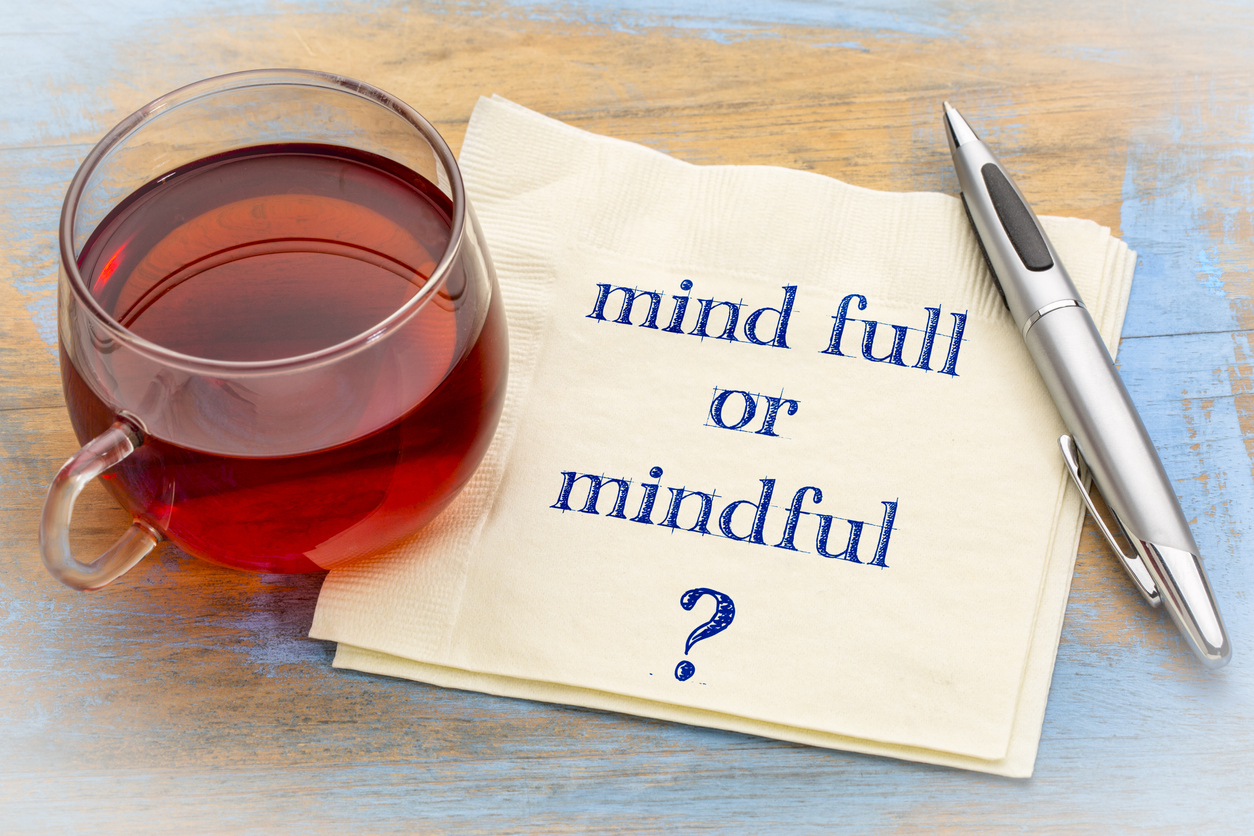We all know that stress has a real and long-reaching effect on both our physical and mental health. Recent population level studies have revealed that 94% of American workers report experiencing stress at their workplace and 63% are ready to quit their jobs due to stress.1
The eye of the tiger
We’re no longer running from tigers – our threats are much more insidious. It’s no longer ‘Arghhhhh this tiger looks hungry,’ but rather, ‘I’m running late for this meeting and it’s really an important one, and Dave is a real stickler for time, but this traffic just won’t budge and I need this deal because it means my mortgage payment won’t be late …’ and ‘why didn’t I leave on time – speaking to Mary made me late and that’s why I’m stuck in this traffic …’ and so on. We engage in such inner dialogues, cognitive ‘self-chats,’ almost incessantly. Adding stress to the mix leads to a surge of stress hormones and neurotransmitters that combine to shift brain function into a downward trajectory.
The ancient stress response that our body and brain registers at the first perception of danger occurs across the hypothalamus-pituitary-adrenal (HPA) axis. The amygdala which is the ‘be careful – your life may be in danger’ center and the hippocampus, the ‘has this situation ever caused problems before? (memory) center’ communicate with each other to try and figure out what danger the stress poses. Then the adrenals are called upon to supply a jolt of energy to muscles to facilitate a fight or flight.
However, the thing that stressed us, the stressor, no longer kills us or allows us to escape. In the modern stress scenario the stressful thoughts and feelings don’t stop, because we haven’t escaped. Our brain now steps into stage two of the modern stress response.

A ‘stuck’ stress response
Modern stress can appear as a constant, from external and internal life and work stressors, which we perceive as our brains inability to switch off. In this way, instead of releasing the stress valve by removing the stressor (the tiger), the brain continues in ‘problem solving overdrive.’
This situation provides our brain with time to imagine every possible outcome of the stressful experience in the form of a constant dialogue that now occurs between the prefrontal cortex (PFC) and the hippocampus. This prevents the brain, and thus the stress response, from returning our physiology back to homeostasis.
The PFC (the brains CEO) has the ability to imagine and play out any outcome that it can conceive and does so with great specificity. In essence, it’s a time machine, which can transport you right back to where the challenge started, and then instantly, to the future where anything could happen.

The PFC asks the hippocampus, for example … ‘Do you remember when I had that accident and then Dave said that, and look at how terrible the outcome was … ’ or ‘ When I did that, you know what happened so maybe I should try this, or this, or this, instead …’ Backwards and forwards communication between these two brain regions go, leading to a lack of clear, concise thinking and an inability to solve the stressful situation or see it for what it actually is.
Clarity of thought and solution-oriented thinking are incapable of being initiated in this scenario. And all the while the body is still being exposed to stress hormones because the adrenals haven’t been advised that everything is fine because the brain doesn’t think things are fine. It’s living in the murky world of ‘past-and-future’ possible outcomes. You didn’t die and you didn’t escape.
Can it get worse? Unfortunately yes. After the stressful experience and response passes the brain has the potential to engage in rumination.

Rumination
So what do we call the cognitive process where thoughts go around and around in our mind?
Rumination is defined as ‘the engagement of negative and unwanted past-centered, repetitive thoughts.’2
Rumination may thus lead to unhealthy post-stress thoughts and feelings during some experiences, which can prevent the optimal processing of the event, and leaves no opportunity to learn from the event and apply what was learned to similar, future scenarios.3
Rumination stops the brain from accessing the wisdom that experience can provide and increases poor problem solving and inflexible thinking. We lose the ability to respond adaptively to stress. The ability to return to a calm state of mind, where stress-hormone production tapers off, is also hindered when rumination is excessive.
In addition, the brain, in its ability to respond adaptively to experience, can lay down neural pathways in relation to stressful experiences, which lead to habitual, negative responses to stress. We find it harder and harder to reach or maintain emotional equilibrium because we’re stuck in a negative stress response loop.
There is however a solution to this modern response to stress. And it’s ironic that this modern, neurological challenge can be solved using an ancient contemplative solution, the practice of mindfulness.

Mindfulness
Mindfulness is defined as:
‘a psychological state in which one focuses attention on events occurring in the present moment’ or as ‘moment-by-moment awareness.’4
The practice of mindfulness provides the brain with the opportunity to shift away from the constant ‘past-future’ scenarios to a mental space of calm using a connection to the now, the present moment. There is a rapidly growing body of evidence that suggests that mindfulness can help us manage stress more effectively. A 2019 randomized-controlled trial found that a 6-week mindfulness-training course was an effective tool that participants could use to manage chronic stress. The researchers compared a 6-week mindfulness-training course to a single day course among 60 employees. The 6-week course provided well-controlled evidence that both perceived and momentary stress was reduced among employees. In addition, participants reported that their coping efficacy increased and they experienced a ‘buffering’ effect against negative mood states.5

Practicing mindfulness is also helpful in relation to the automatic desire to eat more sweet and fatty foods that many people experience when chronically stressed. The surge of both serotonin and dopamine along with the release of opioids that accompany the consumption of these types of food may provide emotional comfort via temporarily lowering the stress response, especially among women.6 A review examining mindfulness training in relation to emotional eating suggests it’s an effective intervention.7
An ancient strategy to managing modern stress may provide overwhelmed brains with the ability to stem the incessant chatter that stress induces. Clarity of thought and flexible thinking lead to a solution-oriented approach to stressors. And helps avoid all the negative and long-reaching effects that stress has on both our brain and body.
#internationalstressawarenessweek #mentalhealth #stressawareness
References
1. Milenkovic M. 42 Worrying Workplace Stress Statistics. The American Institute of Stress. 2019. Available from: https://www.stress.org/42-worrying-workplace-stress-statistics
2. Gianferante D, Thoma MV, Hanlin L, Chen X, Breines JG, Zoccola PM, et al. Post-stress rumination predicts HPA axis responses to repeated acute stress. Psychoneuroendocrinology. 2014 Nov;49:244-52.
3. Malin K, Littlejohn GO. Rumination modulates stress and other psychological processes in fibromyalgia. European Journal of Rheumatology. 2015 Dec;2(4):143-8.
4. Davis DM, Hayes JA. What are the benefits of mindfulness? A practice review of psychotherapy-related research. Psychotherapy (Chic). 2011 Jun;48(2):198-208.
5. Chin B, Slutsky J, Raye J, Creswell JD. Mindfulness Training Reduces Stress At Work: A Randomized Controlled Trial. Mindfulness (N Y). 2019 Apr;10(4):627-38.
6. Mouchacca J, Abbott GR, Ball K. Associations between psychological stress, eating, physical activity, sedentary behaviours and body weight among women: a longitudinal study. BioMed Central Public Health. 2013;13:828.
7. Katterman SN, Kleinman BM, Hood MM, Nackers LM, Corsica JA. Mindfulness meditation as an intervention for binge eating, emotional eating, and weight loss: a systematic review. Eat Behav. 2014 Apr;15(2):197-204.

